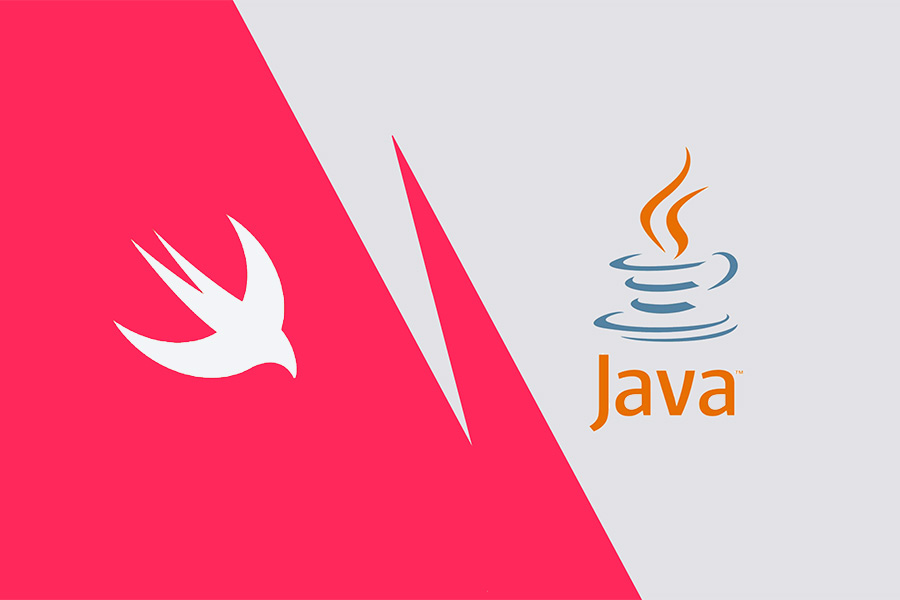What Developers Need to Know when choosing between Swift and Java
Mobile app development requires careful consideration of programming languages, as this choice fundamentally shapes the entire development process. Developers often find themselves weighing the merits of different languages, with Swift and Java representing two of the most prominent options in today’s mobile landscape.
The choice between Swift and Java for mobile app development primarily depends on the target platform, as Swift excels for iOS applications while Java remains essential for Android development. However, the decision involves more nuanced considerations beyond platform requirements. Each language brings distinct advantages in performance characteristics, development workflows, and long-term maintenance requirements.
Understanding the fundamental differences between these programming languages helps developers make informed decisions about their mobile projects. The comparison extends beyond syntax and features to encompass ecosystem integration, memory management approaches, and the overall developer experience that each language provides.
Fundamental Differences Between Swift and Java
Swift and Java represent two distinct programming paradigms with different origins, target platforms, and design philosophies. Swift focuses exclusively on Apple’s ecosystem with modern syntax, while Java emphasizes cross-platform compatibility and enterprise-level development.
Languages Overview and Origins
Java emerged in 1995 as Sun Microsystems’ solution for platform-independent programming. Oracle now maintains this object-oriented language that powers millions of applications worldwide. The language follows a “write once, run anywhere” philosophy through its virtual machine architecture.
Swift launched in 2014 as Apple’s modern replacement for Objective-C. Chris Lattner designed Swift programming to combine performance with safety features. The language targets Apple’s entire ecosystem, including iOS, macOS, watchOS, and tvOS platforms.
Java uses verbose syntax that requires explicit declarations and boilerplate code. Developers often need to handle memory management manually in many cases. The language supports multiple programming paradigms, primarily following object-oriented principles.
Swift programming features concise syntax with type inference and automatic memory management. The language eliminates common programming errors through optional types and nil safety. It seamlessly combines functional and object-oriented programming approaches.
Primary Use Cases in Mobile Development
Java historically dominated Android mobile application development before Kotlin’s introduction. Enterprise applications frequently choose Java for its stability and extensive library ecosystem. The language excels in backend services, web applications, and large-scale distributed systems.
Cross-platform frameworks like React Native and Xamarin often integrate with Java components. Banking, healthcare, and government sectors prefer Java for mission-critical applications. The language’s maturity provides extensive documentation and community support.
Swift exclusively targets iOS mobile application development within Apple’s ecosystem. Native iOS apps built with Swift programming deliver optimal performance and user experience. The language integrates seamlessly with Apple’s development tools and frameworks.
tvOS and watchOS applications also rely on Swift for native development. Apple encourages Swift adoption through continuous language improvements and tooling enhancements. The language provides direct access to iOS-specific APIs and hardware features.
Key Philosophical Approaches
Java prioritizes backward compatibility and enterprise stability over rapid innovation. The language maintains strict typing systems and verbose syntax for code clarity. Platform independence remains Java’s core strength through bytecode compilation.
Memory management in Java relies on garbage collection rather than manual allocation. The language emphasizes robust error handling through checked exceptions. Java’s philosophy centers on reliability and predictability for large development teams.
Swift programming emphasizes developer productivity through modern language features. Type safety and performance optimization guide Swift’s design decisions. The language prevents common programming mistakes at compile time rather than at runtime.
Apple designed Swift to be approachable for beginners while powerful for experts. The language evolves rapidly with regular updates and feature additions. Swift’s philosophy strikes a balance between safety and performance for mobile application development needs.
Platform Compatibility and Ecosystem Integration
Swift integrates exclusively with Apple’s ecosystem, whereas Java dominates Android development due to its platform-independent architecture. Each language offers distinct advantages for cross-platform strategies depending on project requirements.
iOS and Apple Ecosystem with Swift
Swift serves as the primary language for iOS development and integrates seamlessly with Apple’s entire ecosystem. The language connects directly with iOS, macOS, watchOS, and tvOS platforms through unified APIs and development tools.
Developers gain access to native iOS features like CoreData, CloudKit, and Metal graphics through Swift’s direct integration. The language works with existing Objective-C codebases, allowing gradual migration from legacy projects without complete rewrites.
Key Swift ecosystem advantages:
- Native access to all iOS frameworks and APIs
- Seamless integration with Xcode development environment
- Direct compatibility with App Store distribution requirements
- Automatic memory management optimized for Apple devices
Swift applications benefit from Apple’s hardware-software optimization, delivering superior performance on iPhone and iPad devices. The language receives regular updates aligned with iOS releases, ensuring compatibility with new Apple features and security requirements.
Android Development with Java
Java maintains its position as the foundational language for Android applications despite Kotlin’s growing adoption. Java offers cross-platform compatibility that allows code to run across various systems with minimal modifications.
Android Studio provides comprehensive Java support with debugging tools, emulators, and build systems specifically designed for Android development. Java applications access the full Android SDK, including platform-specific features like Google Play Services and Android Jetpack libraries.
Java advantages for Android development
- Mature ecosystem with extensive third-party libraries
- Strong integration with Google’s development tools
- Access to Android’s complete API framework
- Established patterns for enterprise-level applications
The language’s platform independence allows developers to share business logic between Android applications and other Java-based systems. This flexibility reduces development time when building applications that span multiple platforms or integrate with existing enterprise infrastructure.
Cross-Platform Development Potential
Neither Swift nor Java provides native cross-platform mobile development capabilities for iOS and Android simultaneously. Swift remains limited to Apple’s ecosystem, while Java focuses primarily on Android and server-side development.
Cross-platform development requires additional frameworks or tools when using either language. Swift developers can utilize frameworks like SwiftUI for multiple Apple platforms but cannot target Android directly.
Java developers face similar limitations when targeting iOS devices. They must rely on cross-platform solutions like React Native or Flutter, which use different programming languages entirely.
Alternative approaches for cross-platform needs
- Shared business logic libraries in Java for Android and web applications
- Swift Package Manager for code sharing across Apple platforms
- Hybrid frameworks that compile to both iOS and Android
- Progressive web applications are accessible on both platforms
Organizations requiring true cross-platform compatibility often choose specialized frameworks rather than native Swift or Java development. This decision involves trade-offs between development efficiency and platform-specific optimization capabilities.
Performance and Memory Management
Swift and Java handle performance and memory management through fundamentally different approaches that directly impact mobile app efficiency. Swift uses static compilation and memory optimizations, while Java relies on virtual machine execution with automatic garbage collection.
Execution Speed and Runtime Efficiency
Swift compiles directly to native machine code, eliminating the overhead of virtual machine interpretation. This direct compilation approach delivers faster execution speeds for computationally intensive tasks.
Java runs on the JVM, which can create slight performance delays, especially in resource-heavy applications. The virtual machine layer adds processing overhead that affects runtime performance.
Performance Characteristics
- Swift: Direct native code execution, optimized memory access patterns
- Java: JVM interpretation overhead, dynamic optimization during runtime
Mobile applications benefit from Swift’s reduced latency in user interface interactions. Java’s performance improves over time through just-in-time compilation, but starts with higher initial overhead.
Automatic Reference Counting in Swift
Swift employs Automatic Reference Counting (ARC) for memory management, tracking object references in real-time. ARC deallocates objects immediately when their reference count reaches zero.
This deterministic approach provides predictable memory usage patterns. Developers maintain control over when memory releases occur through reference management.
ARC Benefits
- Immediate deallocation when objects become unused
- Low memory overhead without garbage collection pauses
- Predictable performance for real-time applications
ARC requires careful handling of retain cycles through weak and unowned references. Memory footprint comparisons between ARC and garbage collection show different resource usage patterns depending on application requirements.
Garbage Collection in Java
Java manages memory through garbage collection on the JVM, automatically cleaning up unused memory resources. The garbage collector runs periodically to reclaim memory from unreferenced objects.
This automatic approach reduces developer memory management responsibilities but introduces unpredictable pause times. Garbage collection cycles can temporarily halt application execution during cleanup operations.
Garbage Collection Trade-offs
| Advantage | Disadvantage |
| Automatic memory cleanup | Unpredictable pause times |
| Reduced memory leaks | Higher memory overhead |
| Simplified development | Less control over timing |
The JVM’s dynamic memory management adapts to different usage patterns over time. However, mobile applications often require consistent performance without the interruptions that garbage collection can introduce.
Development Experience and Learning Curve
Swift offers a more modern syntax that appeals to newcomers, while Java provides extensive documentation and established learning paths. Both languages have distinct community ecosystems that influence the development experience.
Ease of Learning Swift
Swift features clean, readable syntax that resembles natural language more than traditional programming languages. Apple designed it to be approachable for beginners while maintaining power for experienced developers.
The language eliminates common programming pitfalls through automatic memory management and type safety. Developers don’t need to manage pointers or worry about memory leaks, which reduces debugging time significantly.
Key Swift Learning Advantages
- Concise syntax with fewer lines of code required
- Interactive playgrounds for immediate code testing
- Strong type inference reduces explicit declarations
- Comprehensive error handling is built into the language
Swift is generally considered more beginner-friendly compared to older languages. The modern language constructs make it easier to learn and use effectively.
New developers can see results quickly with Swift’s immediate feedback systems. The Xcode environment provides real-time error checking and suggestions that accelerate the learning process.
Ease of Learning Java
Java programming follows object-oriented principles with explicit syntax that teaches fundamental programming concepts. The verbose nature helps beginners understand what each piece of code accomplishes.
The “write once, run anywhere” philosophy means developers learn skills that transfer across multiple platforms. This versatility makes Java knowledge valuable beyond mobile development.
Java Learning Characteristics
- Structured approach to object-oriented programming
- Explicit variable declarations improve code understanding
- Extensive documentation available for every feature
- Large number of tutorials and educational resources
Java requires more boilerplate code than Swift, which can initially slow development speed. However, this verbosity helps developers understand underlying programming concepts more thoroughly.
The language has been around since 1995, creating decades of refined teaching materials. Educational institutions commonly use Java in computer science programs, making it familiar to many developers.
Community and Available Resources
The Swift community continues growing but remains smaller than Java’s established ecosystem. Java’s community is larger and more established, providing extensive resources for developers.
Swift Community Resources
- Official Apple documentation and WWDC sessions
- Swift.org with language evolution proposals
- Growing number of third-party libraries
- Active forums and Stack Overflow presence
Java Community Resources
- Massive Stack Overflow knowledge base
- Extensive library ecosystem with Maven/Gradle
- Multiple IDE options and development tools
- Corporate support from Oracle and other vendors
Java developers benefit from extensive libraries and frameworks that speed up development with prebuilt solutions. The mature ecosystem means solutions exist for the most common programming challenges.
Swift’s community produces high-quality resources but with less historical depth. Apple’s official documentation sets high standards, though third-party resources are still developing compared to Java’s vast repository.
Suitability for Different Application Types
Swift excels in iOS-native applications requiring seamless Apple ecosystem integration, while Java dominates Android development and cross-platform enterprise solutions. Each language serves distinct application categories based on performance requirements, platform constraints, and development timelines.
Enterprise Applications and Backend Systems
Java maintains a dominant position in enterprise mobile app development due to its mature ecosystem and extensive library support. Large organizations prefer Java for applications requiring integration with existing enterprise infrastructure and legacy systems.
Key advantages for enterprise development
- Robust database connectivity through JDBC
- Extensive middleware and framework support
- Strong security features and compliance tools
- Scalable architecture patterns
Enterprise applications benefit from Java’s platform independence, allowing companies to deploy across multiple operating systems without code modifications. The language’s stability and backward compatibility reduce long-term maintenance costs for large-scale deployments.
Backend systems built with Java integrate seamlessly with Android applications through shared libraries and common architectural patterns. Development teams can leverage existing Java expertise across both mobile and server-side components.
Mobile Games and High-Performance Apps
Swift delivers superior performance for iOS games and computationally intensive applications through direct hardware access and optimized memory management. The language’s close integration with Metal graphics API enables high-frame-rate rendering and complex visual effects.
Performance characteristics
- Native compilation to machine code
- Automatic Reference Counting (ARC) for efficient memory usage
- Direct access to iOS hardware capabilities
- Optimized for Apple Silicon processors
Java’s performance in mobile games depends heavily on the Android Runtime (ART) and garbage collection efficiency. While suitable for casual games and business applications, intensive 3D games often require additional optimization or native code integration.
Swift’s type safety and compile-time optimizations reduce runtime errors in performance-critical applications. Game developers can implement complex algorithms without significant performance penalties compared to interpreted languages.
Startups and MVPs
Swift enables rapid iOS prototyping through contemporary syntax that enhances code readability and reduces development time for minimum viable products. Startups targeting premium iOS users benefit from Swift’s streamlined development process.
Startup considerations
- Faster time-to-market for iOS applications
- Lower initial development costs
- Access to an affluent iOS user base
- Simplified testing and debugging tools
Java offers a broader market reach through Android’s global market share, making it attractive for startups targeting emerging markets or price-sensitive demographics. The language’s extensive documentation and community support reduce learning curves for new developers.
Budget-conscious startups often choose Java for initial Android releases before expanding to iOS platforms. Cross-platform frameworks built on Java foundations enable code sharing between mobile and web applications, maximizing development efficiency for small teams.
Conclusion
Choosing between Swift and Java isn’t about declaring a universal winner—it’s about aligning the strengths of each language with the specific needs of your project. Swift offers speed, safety, and seamless integration for iOS, while Java provides unmatched stability, scalability, and a vast ecosystem for Android.
For developers, the key lies in understanding these trade-offs and selecting the language that not only fits the platform but also supports long-term growth and innovation. In the end, the right choice is the one that empowers you to build better, faster, and more innovative mobile applications.







